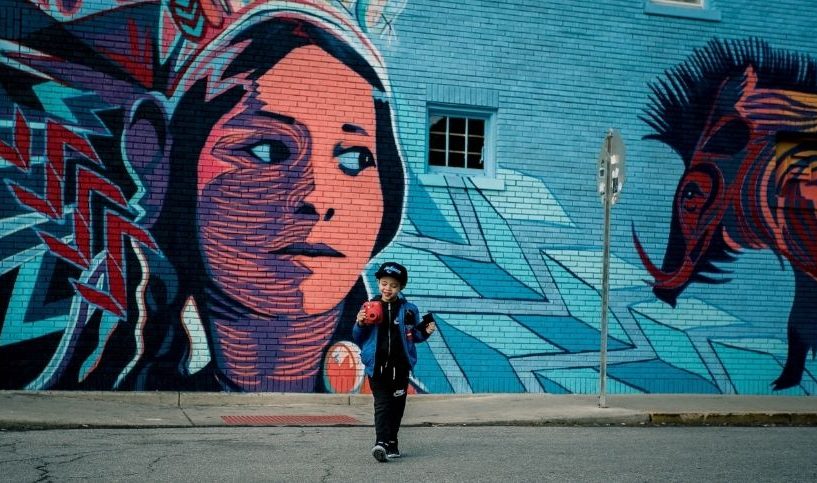by Sara Al Mulla
You could easily lose yourself in a city that feels like a picturesque setting from a novel. Such cities have embraced culture and creativity as bewitching narratives to attract the aesthetes, connoisseurs, and gourmands of the world. Creative cities – such as Tokyo, Paris, and London – have integrated creativity in the fabric of its urban beauty and being, infusing everyday life with a touch of magic. They are also global hubs for the arts, design, literature, and film industries. Anyone glimpsing their calendars will immediately be captivated by an exhilarating selection of creative activities, ranging from book fairs, literary festivals, and performing arts shows, to film screenings, art exhibitions and creative workshops.
An instant reverie transports me to Paris with its charming, storybook neighborhoods, opulent opera houses, and whimsical gardens. Venice, this bedazzling aquatic city often feels like a moving watercolor painting and is home to cultural treasures like the Teatro La Fenice, the Academy Gallery, and dreamy gondolas. Walking in Tokyo’s creative urban heart will enthrall you with stylish bookshops, cafés, and museums lining the graffiti-embellished streets. Indeed, such treasured experiences are what wanderlust souls long for.
Paris is the jewel amongst cultural cities and is one of the most visited cities in the world. Its remarkable suite of cultural offerings include 4,000 historic monuments, 140 museums, 361 theatres, 5 opera houses, 4 UNESCO sites, 47 foreign cultural institutes, 22,763 restaurants, and 421 parks. Interestingly, the city had to undergo a major urban renovation during the mid- 19th century in order to reach its coveted status today. Emperor Napoléon III hired a new prefect of Seine, Baron Georges-Eugène Haussmann, and commissioned him to make Paris “more beautiful”.
Between 1853 and 1870, the city experienced an urban renaissance, with its masterplan including beautiful projects, such as adding expansive avenues and boulevards, charming squares tucked within neighborhoods, opulent theatres, blooming gardens, ornate architectural façades with chic balconies, and the iconic Parisian street lamps. Indeed, visitors today can marvel at Baron Haussmann’s artistic ingenuity and enjoy many attractions as a result, such as the Étoile area around the Arc de Triomphe, the restoration of the gardens of the Champs- Élysées, the Opéra Garnier, and the completion of the last wing of the Louvre – to name but a few. Furthermore, his team planted six hundred thousand trees and added a further two thousand hectares of green space to Paris. American writer Ernest Hemingway once said, “If you are lucky enough to have lived in Paris as a young man, then wherever you go for the rest of your life, it stays with you, for Paris is a moveable feast.”
Elsewhere, many cities are luring visitors with cultural attractions. For example, Edinburgh, a UNESCO City of Literature has inspired more than 500 novels and is home to many famous writers. The city attracts visitors with its fantastic literary scene, from bookstores and literary cafés to writing workshops and writers’ museums. The yearly Edinburgh International Book Festival is the largest literary festival in the world and welcomes more than 1,000 writers to talk about literature.
Venice remains fabled, almost surreal, with its meandering aquatic canals inviting you to get lost in its cultural jewels. The city has been attracting visitors since the 7th century, praising its much- admired reputation for tolerance, freedom of expression, hospitality, and its patronage of the arts. It has always been at the forefront of the arts scene – opening the first theatre in Europe, the first coffee house, as well as establishing a thriving publishing industry during the 14th century. In fact, during the 17th and 18th centuries, European aristocratic families would send their children to major cultural cities, such as Venice, as part of their education in the arts.
It is also important to note that investment in the creative industries boosts economic prosperity and citizens’ wellbeing, according to a growing body of research by urban economists. In 2013, the UNESCO, International Confederation of Societies of Authors and Composers, and EY released a study on the global contribution of cultural and creative industries, stating that these sectors generated $US 2,250 billion globally (3% of world GDP) and employed 29.5 million people. It is interesting to note that cultural tourists make up 35.8% of global tourism, according to the World Tourism Organization.
Indeed, the charms of creative cities go beyond the physical world, for they nurture our minds with wondrous ideas, boundless inspiration, and unforgettable experiences.
Sara Al Mulla is an Emirati civil servant with a Master of Arts in Children’s Literature from the University of Roehampton. Visit www.amorelicious.com to find out more about her work or get in touch with her. Photo by Chris Benson on Unsplash.











